Ærø is a magical place. It is an island that is held dear to so many couples and is a genuine fairytale location for a wedding. Its quaint streets, beautiful scenery and kind people make it one of the more popular locations for couples getting married in Denmark.
You might also be interested to read Danish Town Halls for Your Wedding in Denmark.
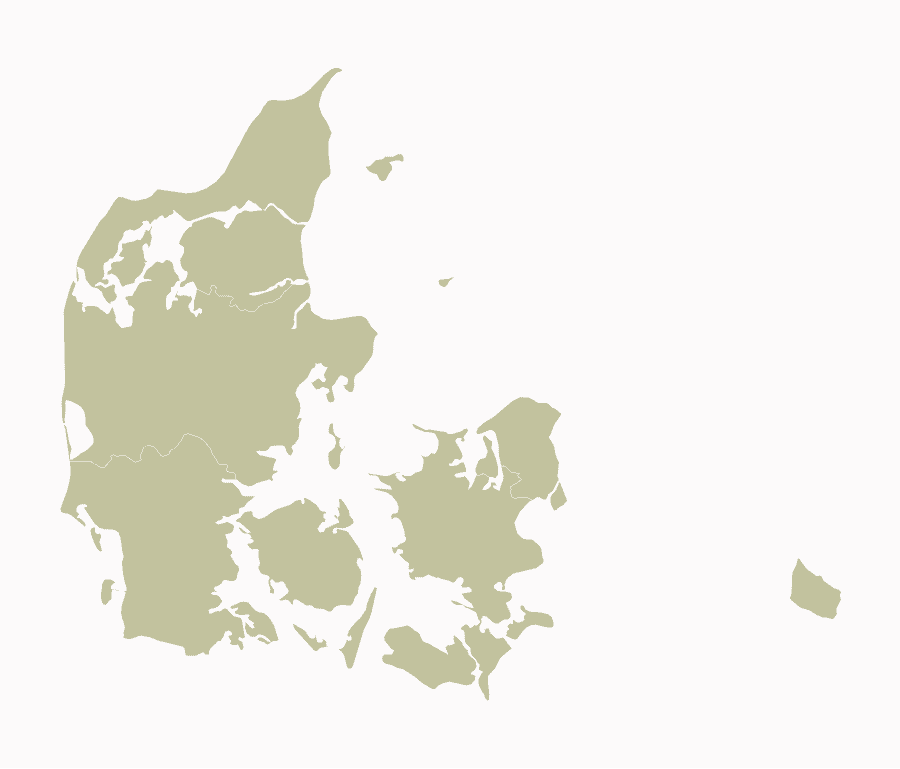
📍Esbjerg
Why Get Married in Ærø?
Trust us when we say you will not be disappointed with a wedding held on this beautiful Danish island.
It is not far from Germany’s border, or only a 3.5 hour journey from Copenhagen (which in the grand scheme of things, really is not that far and well worth the travel).
The town hall here conducts weddings Tues through to Friday plus every other Saturday throughout the spring, summer and autumn, with slightly reduced days in the depths of winter, meaning availability here is great.
Further to this, witnesses are provided by the town hall on every single day that they hold weddings.
The marriage office is incredibly quick at responding to date requests, often same day and always within 24 hours so getting a date booked here is super simple, hassle free and fast!
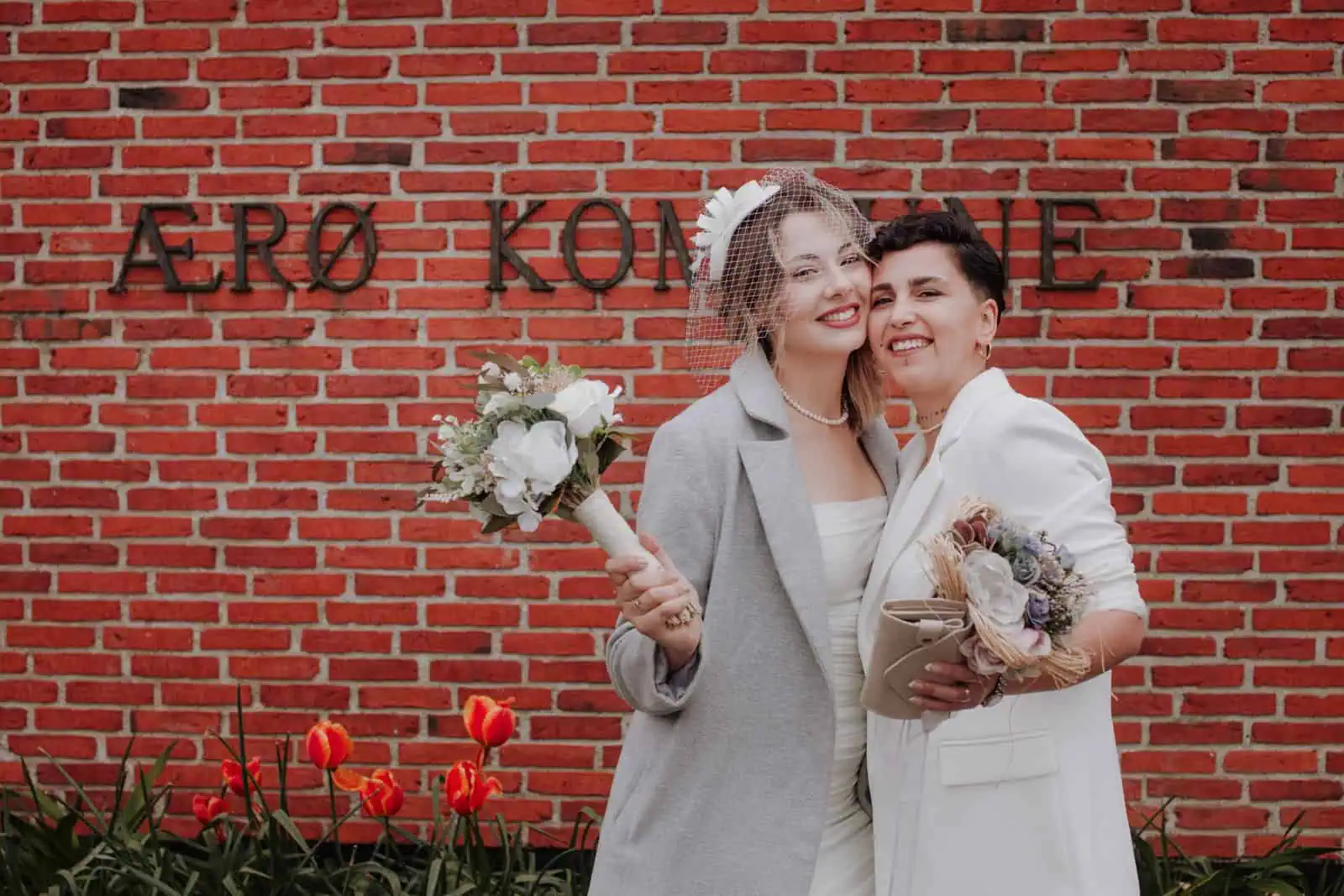
Photo Credit: Amogh Pant
In addition to all this, Ærø is a truly fabulous place.
There are some gorgeous places to eat and stay (do be aware that during the busier seasons places do get booked up quickly), and if you have the time, exploring beyond Ærøskøbing really gives you a great and full experience of this wonderful island.


Photo Credit: Hanna Bursuk
Witnesses are provided by the town hall as standard procedure on all wedding days, at no extra cost.
Ærø Town Hall officially take 24-48 hours to respond to couples once the Danish Administration has approved an application. It can occasionally be much quicker than this, but it does depend on how busy they are. This town hall certainly suits couples who are looking to get a date booked ASAP once the Danish Administration has confirmed an application.
You have to present your original documents at the town hall in Ærø one working day prior to your ceremony.
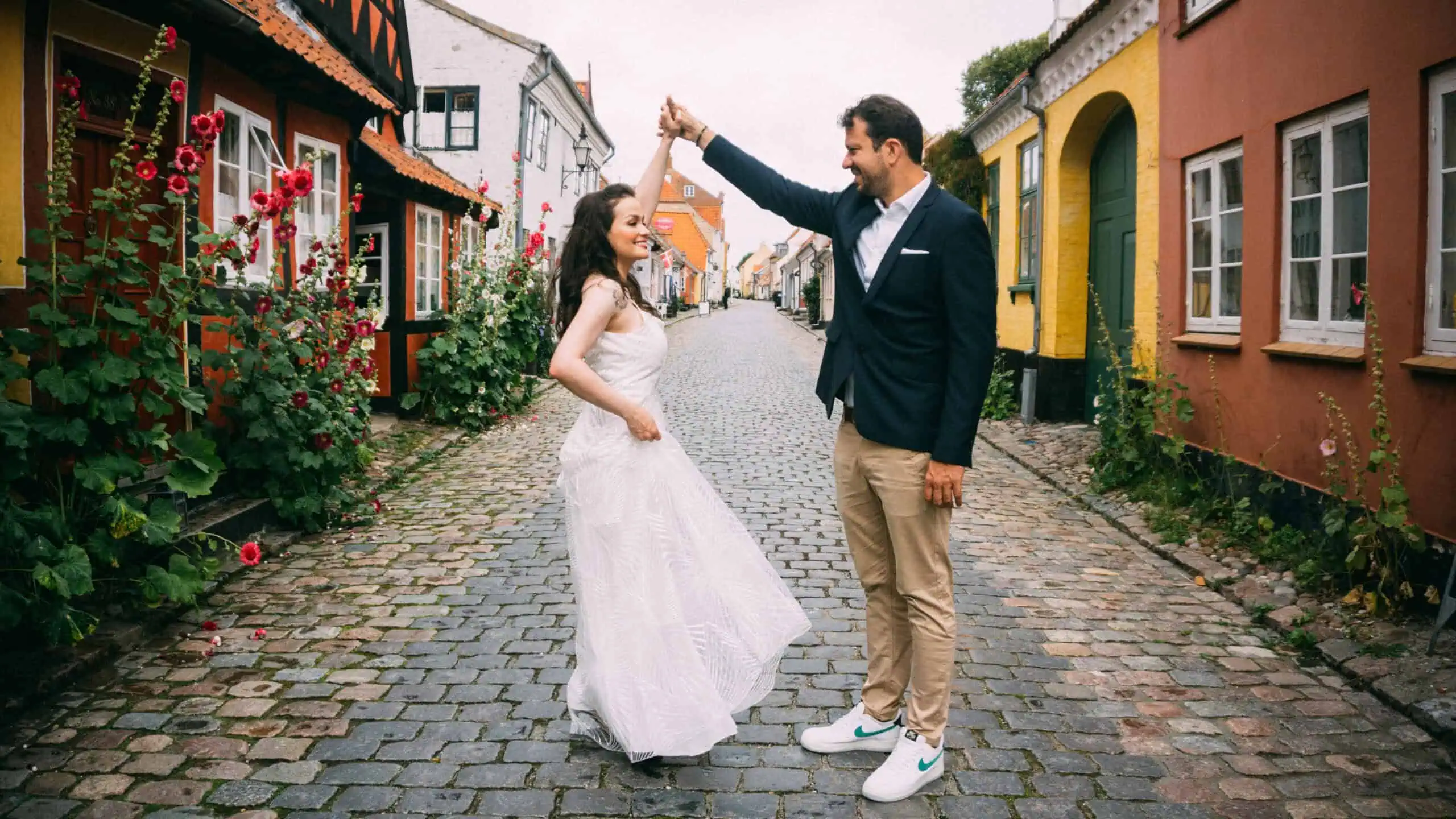
Get your free required documentation list.
Want to know exactly what documents you and your partner need to get married in Denmark?
Send us your name and email and we will get back to you shortly with your free required documentation list.
The Look and Feel when Getting Married in Ærø
Ærø is a small island with a huge personality. Its quaint and cobblestone streets ooze romance and timelessness. Visiting Ærø forces you to slow down and enjoy a slower pace of life, even if you’re only there for 2 days!
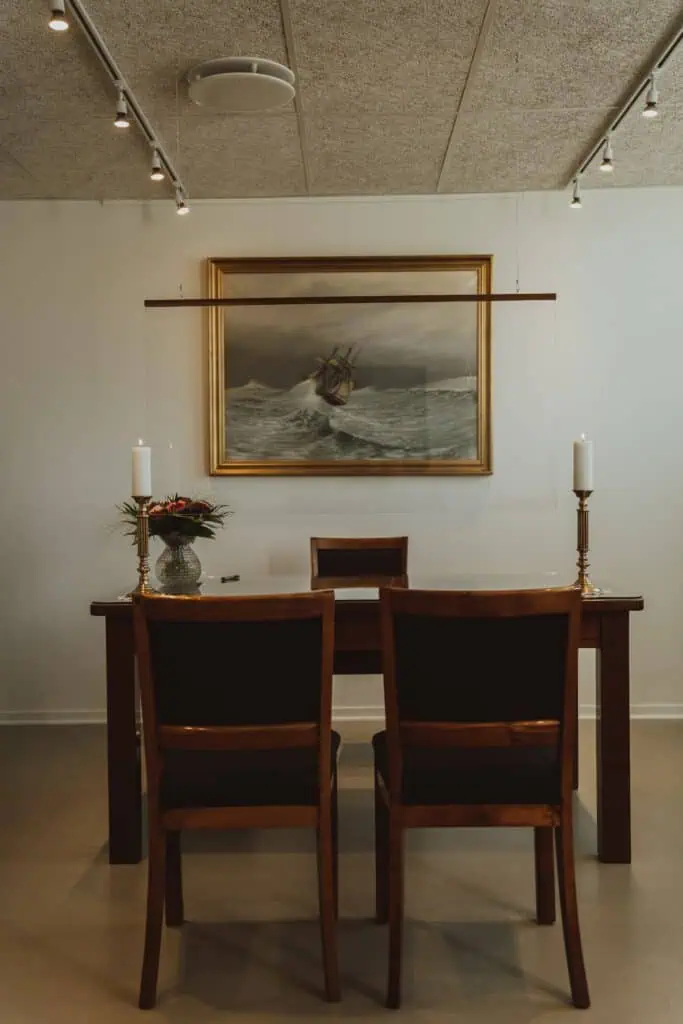
As with any town hall wedding in Denmark, the wedding ceremony is fairly short but certainly one to remember.
The town hall staff are kind and warm and want you to have the very best experience in the short time you are there. This is often remarked on by our couples who comment that the staff took incredible care of them.
They are some of the kindest people you’ll meet, with your interests, enjoyment and experience at the heart of every wedding they conduct.
All in all, the island is beautiful, quaint and full of heart and soul. A truly wonderful place to get married.
The town hall itself is a modern building, but that does not detract from its charm. We know you’ll simply love it here!
How to Get to Ærø
Your wedding will take place in the lovely town of Ærøskøbing on Ærø island.
The closest international airports are: Copenhagen, Billund and Hamburg.
From Copenhagen to Ærø (Aeroe)
Driving from Copenhagen airport you should get there in approximately 3h 30 mins.
You will be taking a ferry from Svendborg to Ærøskøbing and if you wish to bring your car to Ærø, make sure to book a car space on the ferry in advance.
If you don’t think you will need the car on the island you can just park it in Svendborg before taking the ferry. 🙂
If you prefer to go by train the journey will take you approximately 3.5 hours also (depending on the train journey) – this is inclusive of the ferry journey.
For the routes and train/bus timetables: Have a look here.
From Hamburg (Germany) to Aeroe
If you decide to drive from the German airport the journey won’t be too long either. It takes about 3h 50mins.
When driving from Germany the fastest route is to take a ferry from Fynshav, in the south of Jutland, to Ærø Island and then drive to Ærøskøbing.
The ferry leaves from Fynshav only a few times a day so if you’re bringing your car make sure to book a space for it in advance.
If you prefer to go by train the journey will take you approximately 8hrs, 15 mins.
For the routes and train/bus timetables: Have a look here.
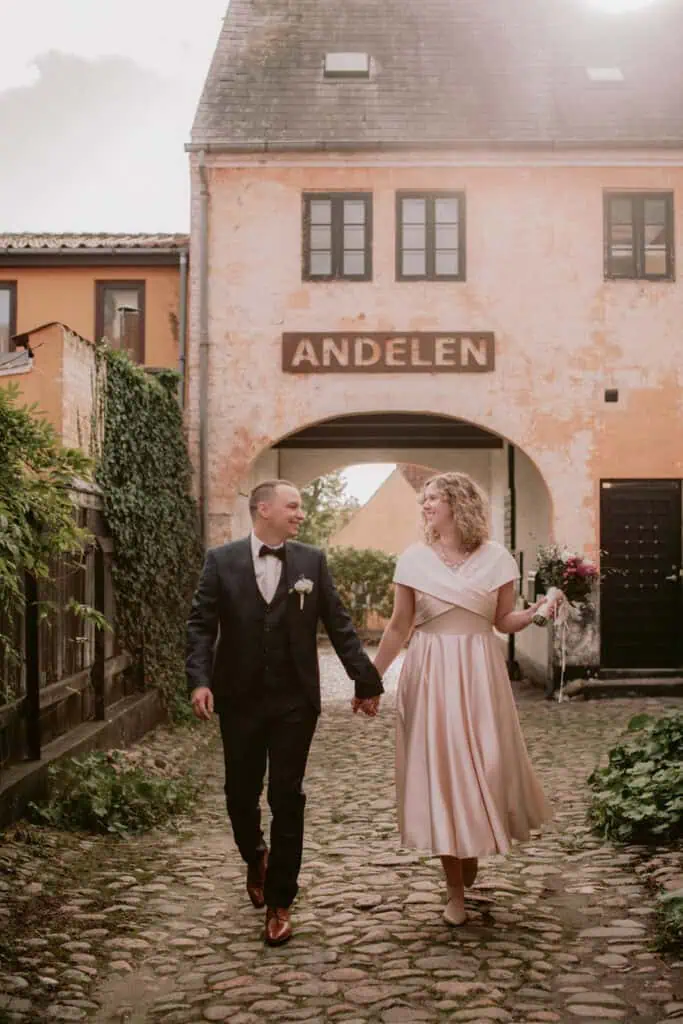
Photo Credit: Amogh Pant

Photo Credit: After The Smoke Is Gone
10 Things to Do and See on Ærø Island
For a small island, the culture and history is rich. The island is vibrant, with different landscapes depending on where you choose to visit, including; stunning cliff tops, beautiful beaches and buzzing marinas.
If you have the time, we recommend taking the time to explore this island treasure to fully soak up the atmosphere, culture and beauty.
1. Explore Ærøskøbing Town Centre 📍
A truly unique, idyllic experience.
Get lost on little cobblestone streets filled with beautiful old houses with colourful doors and windows.
When you get to the old market square you’ll see old pumps which are still in working order, although they haven’t supplied water since 1952.
In Ærøskøbing, you’ll enjoy its lively cafes, shops, restaurants and meet some lovely people on the streets.
2. Vesterstrand Beach 📍
The closest beach to the town will steal your heart!
This fine sandy beach is filled with small colourful beach huts which make it really picturesque and unique.
It’s a big tradition for the citizens of Ærøskøbing, as well as tourists, to watch the sunset from this beach.
Many say it’s a spot for some the most beautiful, if not the most beautiful, sunsets in Denmark!
When the weather is warm you can enjoy sunbathing and swimming in the sea and on colder days you can take a romantic walk or picnic on the cosy beach.
3. Harbour & Marina📍
This lovely harbour is just a few minutes walk from the town.
A perfect place to watch a truly stunning sunset all year round!
The Marina offers all sorts of facilities such as a barbeque area, shops and even a minigolf course!
If you get hungry there is the Ærøskøbing Bakery close by with delicious, traditional Danish cakes and pastries.
Whether you want to have a stroll with beautiful views or have some fun playing mini golf the Harbour & Marina are definitely worth visiting!
4. Ærøskøbing Church 📍
Ærøskøbing church is a beautiful church from the 18th century.
The church was finished in 1758 and it was built as a replacement for Ramshackle Church which dated from the Middle Ages.
The new church preserved important relics from Ramshackle Church, such as the 13th century baptismal font and the pulpit dating back to 1634.
It also has an impressive church organ from 1880.
It’s minimalistic, yet majestic white exterior and beautiful interior make it definitely worth seeing.
5. The Prior’s House 📍
One of the town’s oldest houses on Ærø.
This big, yellow house was built in 1690.
Its current name comes from Alexis Prior who bought the house in 1917 and restored it.
Prior made sure to keep the house’s old form, which nowadays impresses people from all over the world.
6. Skjoldnæs Lighthouse 📍
One of the most beautiful lighthouses in Denmark.
This impressive 22 metre tall lighthouse was built in 1881 and had a very special place in the hearts of the local community.
After Ærø became part of Svendborg county, the result of splitting Schleswig in 1864, citizens of the island decided to build a tower tall enough to be seen from as far as Kiel and therefore saluted their ‘’lost’’ friends and families.
Climb up the 57 stairs and enjoy truly incredible views from the watch room.
You can also have a look at the lantern which is the original lantern from when the lighthouse was built!
7. Voderup Klint 📍
This cliff area is definitely one of the most spectacular places on the island.
At 33 metres high and a few kilometers long the cliff is a perfect place for a relaxing day out.
The cliff is often called the ‘’largest staircase in Denmark’’ due to its terraced plateaus which look like giant stairs and make the cliff quite unique.
This wonder of nature with views of the sea is definitely worth exploring!
8. Ærø Museum📍
A place where you’ll find out about Ærø’s culture and traditions from the old days until today.
A modern exhibition shows the island’s most interesting traditions such as dressing up on the evening of the Holy Three Kings or egg cooking on Easter Saturday.
You can also learn about the island’s history, its signature dishes and see an impressive reconstruction of Ærøskøbing garden from around the 1920s.
You’ll be surprised how interesting this little island is!
9. Vitsø📍
A picturesque green area filled with small lakes and beach meadows.
In this tranquil, natural space you’ll find a traditional windmill from 1836 and you’ll meet plenty of different types of birds.
You can explore Vitsø by foot or on a bicycle making it a great place for an active, yet relaxing day trip.
10. Erikshale Beach📍
A truly unique and diverse beach.
Erikshale, just by the town of Marstal, is where two very different types of water meet.
On the one side, between the marina and the beach, there is a shallow bay with calm, warm water.
On the other side of the beach there is the crisp and refreshing Baltic Sea.
The beach is also home to cute, traditional beach houses famous among tourists from all over the world.
Learn more about our collaboration with Danish Island Weddings, the best wedding planners on Ærø.
The History of Ærø
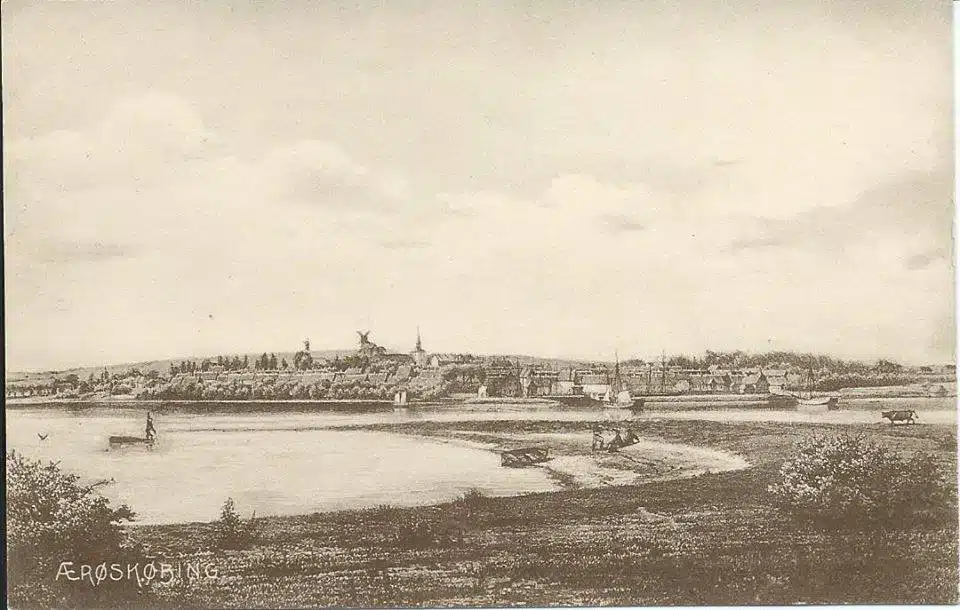
This charming town on the beautiful Ærø island has a long history.
Ærøskøbing was the island’s main town and the centre of maritime and commercial trade from approximately 1250.
Unfortunately the town was burnt down in a disastrous great fire in 1629, but this didn’t stop the town from flourishing.
Its old houses were quickly rebuilt and new houses appeared in the town, ensuring that Ærøskøbing kept its importance and privileges.
When, in 1864, the Schleswig area was divided between Denmark and Germany Ærø island officially became part of Denmark.
The idyllic town of Ærøskøbing gives a real glimpse at history. Most of its houses have been delicately restored but have kept their original character.
At first this was due to poverty which meant that the town’s citizens couldn’t afford to destroy the old and build new houses, but when prosperity came to the town its people realised that their houses were real treasures and decided to restore, rather than change, them.
In 2002 the town was awarded the Europa Nostra prize in recognition of Ærøskøbing’s citizens’ preservation of their cultural heritage.



